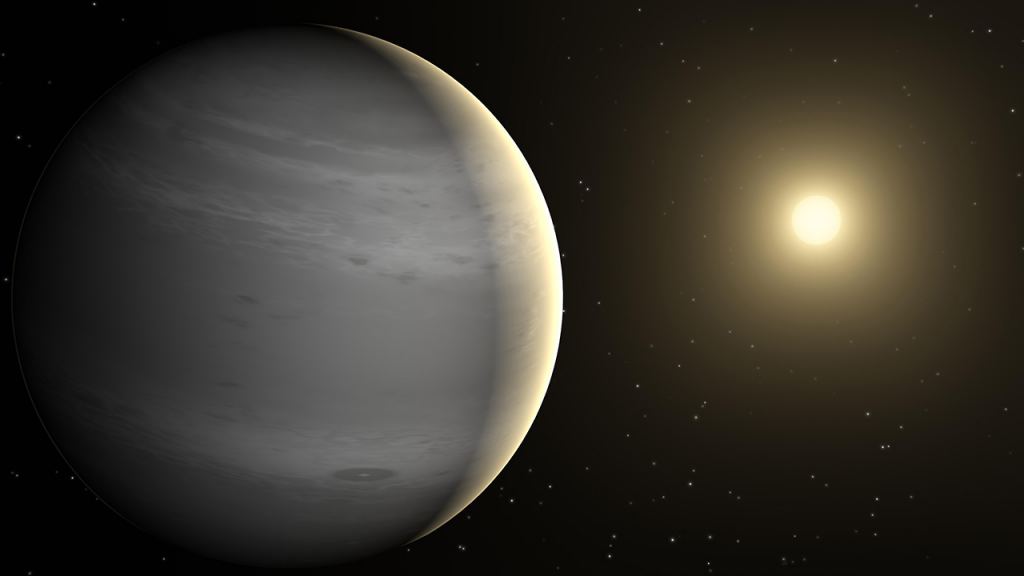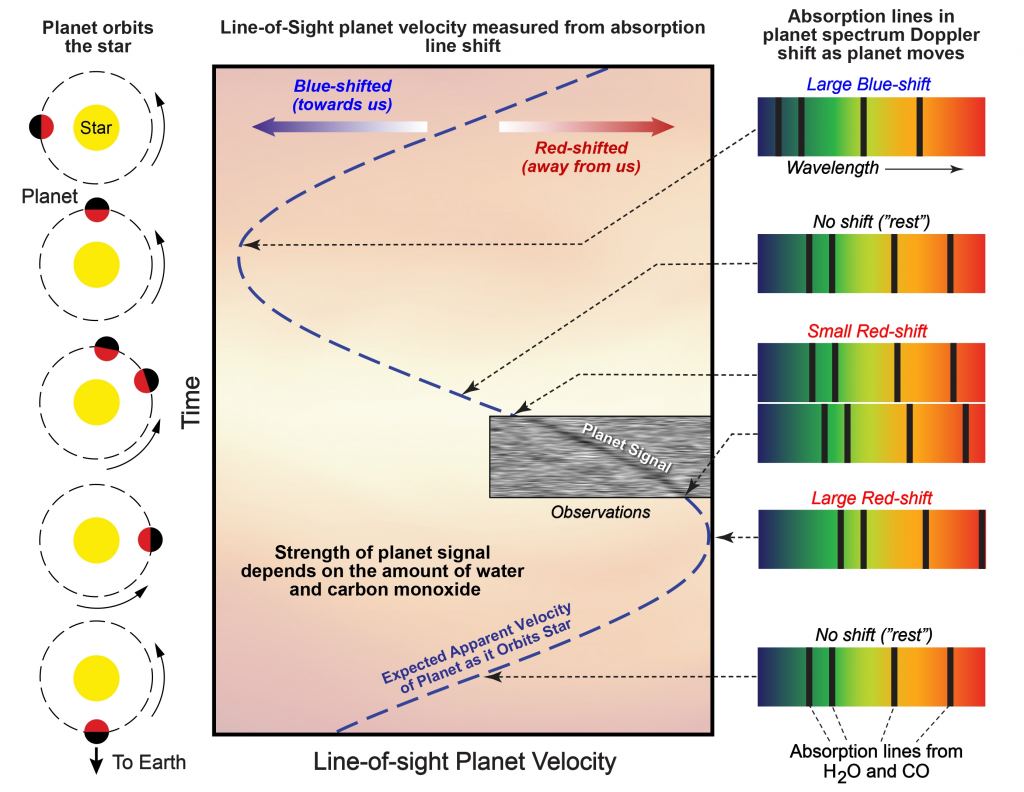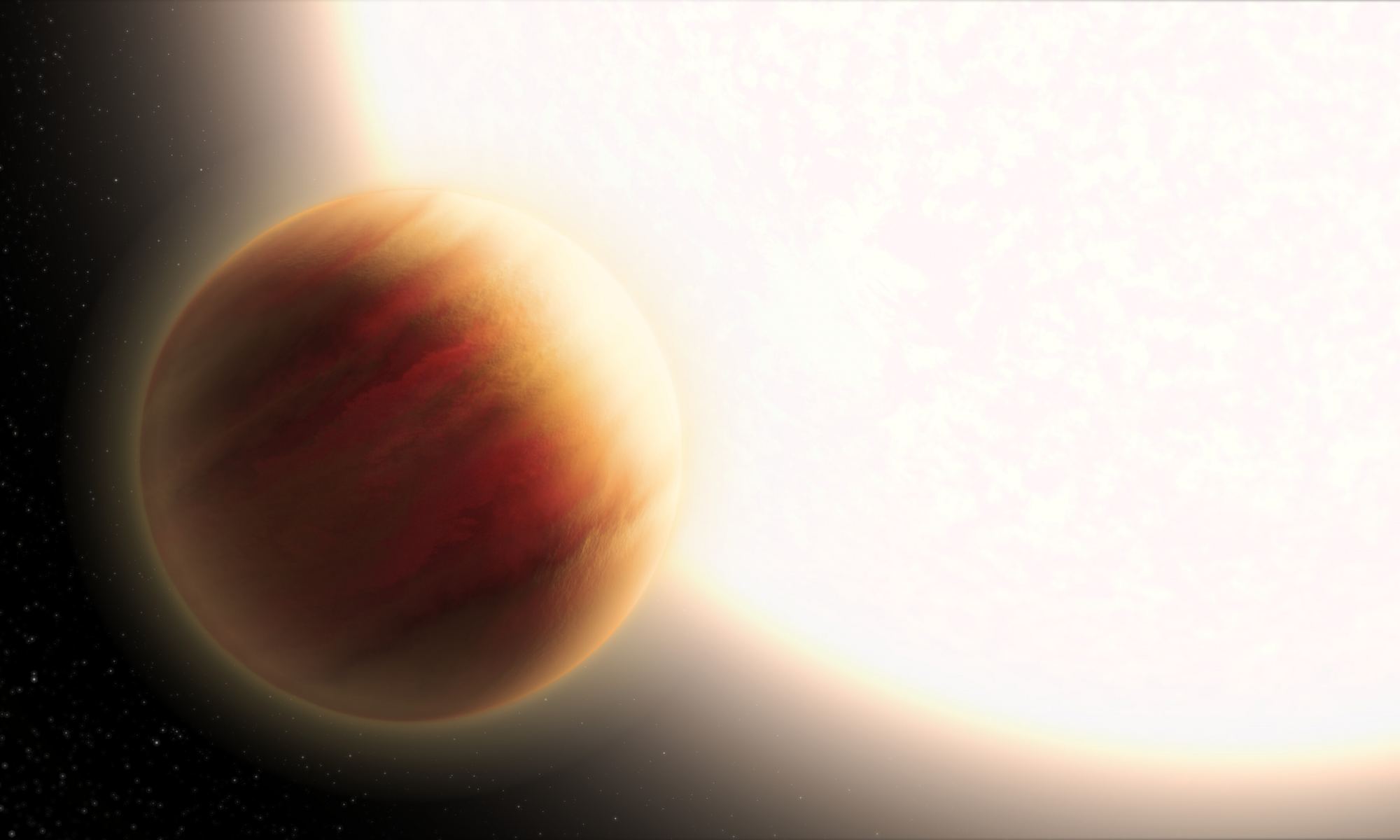The field of extrasolar planet research has advanced by leaps and bounds over the past fifteen years. To date, astronomers have relied on space-based and ground-based telescopes to confirm the existence of 4,566 exoplanets in 3,385 systems, with another 7,913 candidates awaiting confirmation. More importantly, in the past few years, the focus of exoplanet studies has slowly shifted from the process of discovery towards characterization.
In particular, astronomers are making great strides when it comes to the characterization of exoplanet atmospheres. Using the Gemini South Telescope (GST) in Chile, an international team led by Arizona State University (ASU) was able to characterize the atmosphere of a “hot Jupiter” located 340 light-years away. This makes them the first team to directly measure the chemical composition of a distant exoplanet’s atmosphere, a significant milestone in the hunt for habitable planets beyond our Solar System.
The team’s study, which recently appeared in the scientific journal Nature, was led by Assistant Professor Michael Line of ASU’s School of Earth and Space Exploration (SESE). He was joined by fellow SESE researchers and members of the Virtual Planetary Laboratory Team (part of NASA’s Astrobiology Institute), the Centre for Exoplanets and Habitability (University of Warwick), and multiple universities worldwide.

For this study, Line and his team focused on WASP-77A b, a gas giant with a mass of 2.29 Jupiters that orbits very close to its Sun-like star (G-type). With an average distance of 0.024 AU, this “hot Jupiter” takes only 1.4 days to complete a single orbit of its star and experiences temperatures of upwards of 1093°C (2,000°F). The planet was spotted for the first time in 2012 by the Wide Angle Search for Planets (WASP) campaign using the Transit Method (aka. Transit Photometry).
This method consists of monitoring stars for periodic dips in luminosity, which are measured and timed to determine the size and orbital period of any planets orbiting the star. Sometimes, astronomers can observe light passing through the atmosphere of the transiting exoplanet, which allows them to obtain spectra and determine what chemicals are present in the planet’s atmosphere. This time, Prof. Line and his colleagues obtained spectra directly from WASP-77A b as it orbited its host star.
For the sake of their study, Line and his team hoped to obtain measurements on the atmospheric carbon and oxygen in WASP-77A b’s atmosphere. The presence of these elements relative to hydrogen in hot Jupiters (relative to their host stars) is something astronomers are seeking, as it will provide insight into this strange class of exoplanet. In particular, astronomers hope to learn more about their formation and subsequent migration. As Prof. Line explained in a recent ASU News release:
“Because of their sizes and temperatures, hot Jupiters are excellent laboratories for measuring atmospheric gases and testing our planet-formation theories. We needed to try something different to address our questions. And our analysis of the capabilities of Gemini South indicated that we could obtain ultra-precise atmospheric measurements.”

In the past, Line and his team have been extensively involved in measuring the atmospheric compositions of exoplanets with the Hubble Space Telescope. Unfortunately, Hubble’s instruments can only measure the presence of water (inferred from the presence of oxygen) in a planet’s atmosphere. Unfortunately, they cannot accurately measure the amounts of carbon compounds (such as carbon monoxide).
This time, Line and his colleagues turned to the 8.1-meter telescope at the Gemini South Observatory, which is operated by the National Science Foundation’s National Optical-Infrared Astronomy Research Laboratory (NOIRLab). Using the telescope’s Immersion GRating INfrared Spectrometer (IGRINS), they were able to observe WASP-77A b directly and measure its near-infrared thermal glow.
From this, they were able to determine the presence and relative amounts of water vapor and carbon monoxide in the planet’s atmosphere. Said Line:
“Trying to figure out the composition of planetary atmospheres is like trying to solve a crime with fingerprints. A smudged fingerprint doesn’t really narrow it down too much, but a very nice, clean fingerprint provides a unique identifier to who committed the crime.”
Whereas the Hubble Space Telescope was able to provide the team with one or two fuzzy “fingerprints” in the past, the IGRINS instrument on the Gemini South telescope provided the team with a full set of clear chemical signatures. From this, they were able to constrain the relative amounts of oxygen and carbon in the exoplanet’s atmosphere and its host star, all of which were in line with their expectations.

These results are not only a major technical achievement but also demonstrate how astronomers will be able to obtain ultra-precise measurements on the presence and abundances of various gases in exoplanet atmospheres. This is the key to exoplanet characterization, which allows astronomers to determine whether or not a planet can support life (as we know it). In essence, this study was a “pathfinder” demonstration that shows what will be possible in the coming years.
By the end of the decade, astronomers will have access to next-generation telescopes, including the James Webb Space Telescope (JWST) and the Nancy Grace Roman Space Telescope (RST). In addition, several ground-based observatories will come online in the near future, including the Extremely Large Telescope (ELT) and the Giant Magellan Telescope (GMT), both of which are currently under construction in the Atacama Desert in northern Chile. Said Line:
“We are now at the point where we can obtain comparable gas abundance precisions to those planets in our own solar system. Measuring the abundances of carbon and oxygen (and other elements) in the atmospheres of a larger sample of exoplanets provides much needed context for understanding the origins and evolution of our own gas giants like Jupiter and Saturn.
“If we can do this with today’s technology, think about what we will be able to do with the up-and-coming telescopes like the Giant Magellan Telescope. It is a real possibility that we can use this same method by the end of this decade to sniff out potential signatures of life, which also contain carbon and oxygen, on rocky Earth-like planets beyond our own solar system.”
Looking ahead, Line and the team plan to conduct these same types of measurements on many more exoplanets, eventually building up a “sample” of at least 15 atmospheric characterizations. They also anticipate many more exciting finds once next-generation telescopes become available. With their particular combination of spectrometers, coronographs, and/or adaptive optics, these observatories will conduct Direct Imaging studies that allow for exoplanet characterization like never before!

